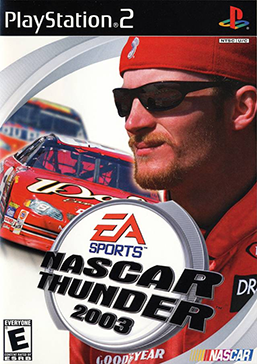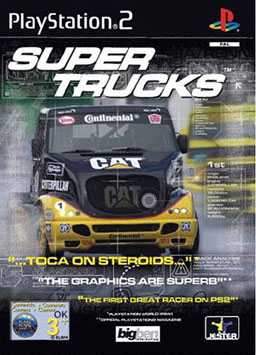Need for Speed (NFS) is a racing game franchise published by Electronic Arts and currently developed by Criterion Games, the developers of Burnout. The series generally centers around illegal street racing and tasks players to complete various types of races while evading the local law enforcement in police pursuits. The series is one of EA's oldest franchises not published under their EA Sports brand. The series released its first title, The Need for Speed, in 1994. The most recent game, Need for Speed Unbound, was released on December 2, 2022. Additionally, a free-to-play mobile installment released in 2015, Need for Speed: No Limits, is actively developed by Firemonkeys Studios, the developers of Real Racing 3.

Midtown Madness is a 1999 racing game developed by Angel Studios and published by Microsoft for Microsoft Windows. The demo version was released in April 1999. Two sequels followed, with Midtown Madness 2 released in September 2000 and Midtown Madness 3 released in June 2003 for the Xbox. The game is set in Chicago; the object is for the player to win street races and obtain new cars.
Ridge Racer is a racing video game series developed and published for arcade systems and home game consoles by Bandai Namco Entertainment, formerly Namco. The first game, Ridge Racer (1993), was originally released in arcades for the Namco System 22 hardware, later ported to the PlayStation two years later as a launch title. It was met with several sequels and spin-off games for multiple platforms, the latest being the mobile game Ridge Racer Draw & Drift (2016) with the latest mainline game being Ridge Racer 7 (2006). Gameplay involves the player racing against computer-controlled opponents to be the first to finish in a race. Drifting is a core aspect of the series, and is used to keep speed while turning corners.

Need for Speed: Underground is a 2003 racing video game and the seventh installment in the Need for Speed series. It was developed by EA Black Box and published by Electronic Arts. Three different versions of the game were produced: one for consoles and Microsoft Windows, and another for the Game Boy Advance. An arcade version was additionally developed by Global VR, and was published by Konami with assistance from Electronic Arts.

Need for Speed: Hot Pursuit 2 is a 2002 racing video game, the sixth installment in the Need for Speed series and the sequel to 1998's Need for Speed III: Hot Pursuit. It was developed by EA Black Box for the PlayStation 2, and by EA Seattle for GameCube, Xbox, and Microsoft Windows. It features cars from various high-performance and exotic car manufacturers. Players can compete in races using these cars, or opt to play as a police officer and pursue speeders.

Midnight Club 3: Dub Edition is a 2005 racing video game developed by Rockstar San Diego and published by Rockstar Games. It is the third installment in the Midnight Club series. Like previous installments in the series, the game is an arcade-style racer and focuses on wild, high-speed racing, rather than realistic physics and driving. The name is derived from a partnership between Rockstar and DUB Magazine, which features heavily in the game in the form of DUB-sponsored races and DUB-customized vehicles as prizes.

NASCAR Thunder 2003 is the sixth edition of the EA Sports' NASCAR racing simulator series. Developed by EA Sports and Budcat Creations and published by Electronic Arts. It was released for PlayStation, PlayStation 2, GameCube, and Xbox on September 19, 2002, and for Microsoft Windows on October 16. The product features Dale Earnhardt Jr. on the cover. It was the first time the NASCAR's Most Popular Driver Award recipient was featured on the cover, although he did not win the award for the first time until the following year. Dale Earnhardt appeared in the game as a driver as a result of entering his name as a Create-A-Car driver's name; he did not appear in the previous game due to his death. He appeared as a legend in subsequent games.

World Racing 2 is a racing video game. It was developed by Synetic. It was released for Windows, PlayStation 2 and Xbox. It was released in North America in 2006. It is the sequel to Mercedes-Benz World Racing from 2003. Unlike Mercedes-Benz World Racing, the game was not released for Nintendo GameCube.

Cars is a 2006 adventure racing game published by THQ. The game is based on the 2006 film of the same name. It was released for the PlayStation 2, GameCube, Xbox, Microsoft Windows, Game Boy Advance, Nintendo DS, and PlayStation Portable in June 2006, with versions for the Xbox 360 and Wii released later that year. The Wii version includes functionality geared towards its Wii Remote controller and was a launch game for the system. Taking place after the events of the film, the player controls the protagonist Lightning McQueen as he participates in the new racing season with the end goal of winning the Piston Cup for the first time in his career, while also racing and training with the local community of Radiator Springs.

Ford Racing 3 is a racing video game published by Empire Interactive, 2K, and ZOO Digital. It is the third game in the Ford Racing series, and was released in Europe in October 2004, for Microsoft Windows, PlayStation 2 and Xbox. In the United States, the game was released on the same platforms the following year, followed by releases later that year for the Game Boy Advance and Nintendo DS. Visual Impact Productions developed the GBA and DS versions, while Razorworks developed the other versions. The game received mixed reviews, critics were divided in its soundtrack, physics and overall content and gameplay.

Ford Street Racing is a game commissioned by Ford for the Xbox, PC, PlayStation 2 and PlayStation Portable (PSP). The game was sold as Ford Street Racing on the PC while the various console releases were given region specific names. They are as follows: Ford Bold Moves Street Racing in the US and Canada, Ford Street Racing: L.A. Duel in the EU, and Ford Street Racing: XR Edition in Australia and New Zealand. It was released September 19, 2006 in the United States. It was developed by Razorworks and published by Empire Interactive under the Empire banner in the US and under the Xplosiv banner in the rest of the world. The game received mostly mixed to negative reviews.

V-Rally 3 is a racing video game developed by Eden Studios and published by Infogrames Europe. It was released for the PlayStation 2 and Game Boy Advance platforms in 2002, and ported to the Xbox, GameCube, and Microsoft Windows in 2003.

Mercedes-Benz Truck Racing (MBTR) is a simulation truck racing video game developed by the German company Synetic GmbH and published by THQ. The game was released for Microsoft Windows in 2000. The development was carried out in cooperation with Daimler AG, owner of Mercedes-Benz.

Super Trucks is a racing video game developed and published by Jester Interactive exclusively for PlayStation 2. All drivers and sponsor information are based on the 2001 season of the Super Trucks racing series.

Burnout Paradise is a 2008 racing video game developed by Criterion Games and published by Electronic Arts for PlayStation 3, Xbox 360 and Microsoft Windows. It was also released on the PlayStation Store and via Xbox Live Marketplace's Games on Demand. It was later added to the libraries of Greatest Hits and Platinum Hits titles and was made backward compatible with the Xbox One in November 2016. It is the first game in the Burnout series to be released on Microsoft Windows.

Crash Time: Autobahn Pursuit is a mission-based driving game released for the PC in 2007 and Xbox 360 in 2008, and a sequel to Alarm für Cobra 11: Nitro. It is based on the German television series Alarm für Cobra 11 – Die Autobahnpolizei, and features several characters from the show working their way through criminal cases set in fictitious versions of the city streets of Cologne, and the autobahn in North Rhine Westphalia. The developers created a "Pathfinder" to ensure that the AI vehicles do not always follow the same path during a pursuit. It was not received well by critics, with graphics and plot being of concern. Four sequels have been released on Xbox 360 and through online content provider Steam.

F1 2011 is a video game developed by Codemasters based on the 2011 Formula One season. The game was released in 2011 on Microsoft Windows, the Nintendo 3DS, PlayStation 3, and Xbox 360, with a 2012 release on the PlayStation Vita as a launch title for the system. The game engine is based on EGO 2.0 engine.

Forza is a racing video game series for Xbox consoles and Microsoft Windows published by Xbox Game Studios.

Grid Autosport is a 2014 racing video game developed by Codemasters for Microsoft Windows, PlayStation 3, Xbox 360, Linux, iOS, macOS, Nintendo Switch and Android. It is the third game in the Grid series. It aims to move the series back towards "more authentic racing games" following the release of Grid 2, which Codemasters felt was not as well-received by the company's core fanbase as it was hoped for. The developers consequently introduced major modifications to the handling model and built a lean, race-first oriented design for this title.

FlatOut is a 2004 racing video game developed by Finnish developer Bugbear Entertainment and published by Empire Interactive, with Vivendi Universal Games distributing in North America. Gameplay in FlatOut places emphasis on demolition derby-style races, and features a sophisticated physics engine. 16 different cars are included, each with 5 different skins for them. The game is mostly known for car drivers flying through the windshield. It was published by Konami on October 13, 2005.


















